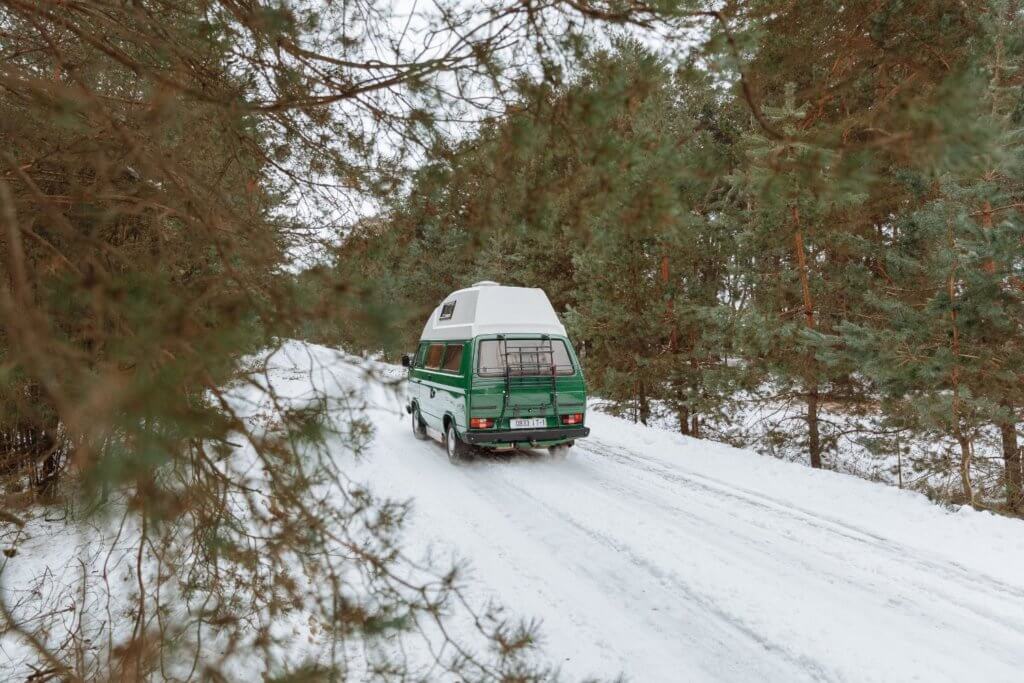
Don’t let the treacherous winter roads catch you off guard. When it comes to selecting the right winter tires for your camper van, the options may seem dizzying. But fear not, because we’ve got you covered.
Hi, Nikole and Clark Stone here! In this comprehensive guide, we’ll equip you with expert tips and advice to navigate through the overwhelming choices and make the perfect decision.
By understanding the importance of winter tires and considering key factors such as the type of rubber used, tread pattern, and whether to opt for studded or non-studded tires, you’ll be well on your way to tackling winter roads with confidence.
This post may contain affiliate links, which means I’ll receive a commission if you purchase through my links, at no extra cost to you. Please read full disclosure for more information.
First, here are all of the items in a chart that we have decided to talk about in this post.
Understanding the Importance of Winter Tires for Your Camper Van
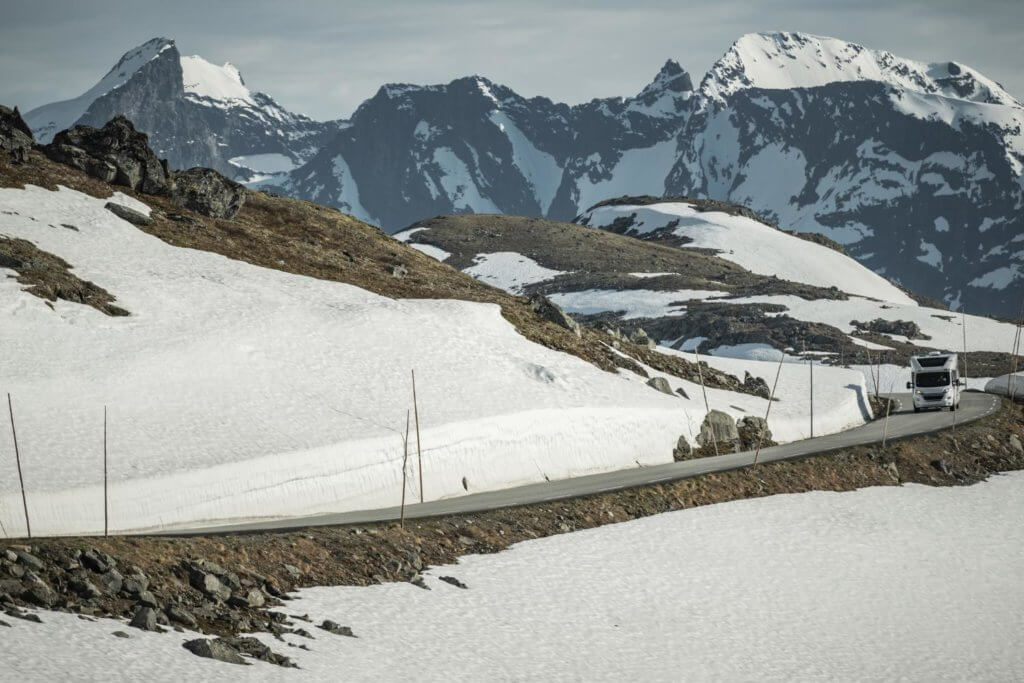
Before we dive into selecting the right winter tires for your camper van, it’s important to understand the significance of investing in these specialized tires. Winter tires are not just another camper van winter accessory – they are crucial to your vehicle’s safety and performance during the colder months.
Here are some aspects that winter tires will improve for your camper van.
Improves Handling
One of the key benefits of winter tires is their ability to enhance your camper van’s stability and handling. With their advanced tread designs and biting edges, these tires can effectively bite into the snow and push it aside, maintaining a firm grip on the road.
Breaking with Winter Tires
Another aspect is the protection winter tires offer for your camper van’s braking system. The enhanced traction provided by these tires allows for shorter braking distances, significantly reducing the chance of accidents or collisions.
Saves your original tire’s lifespan
Additionally, the use of winter tires can have a positive impact on the overall longevity and performance of your regular tires.
By utilizing winter tires during the colder months, you can minimize wear and tear on your summer or all-season tires, extending their lifespan.
Making Your Decision: Factors to Consider
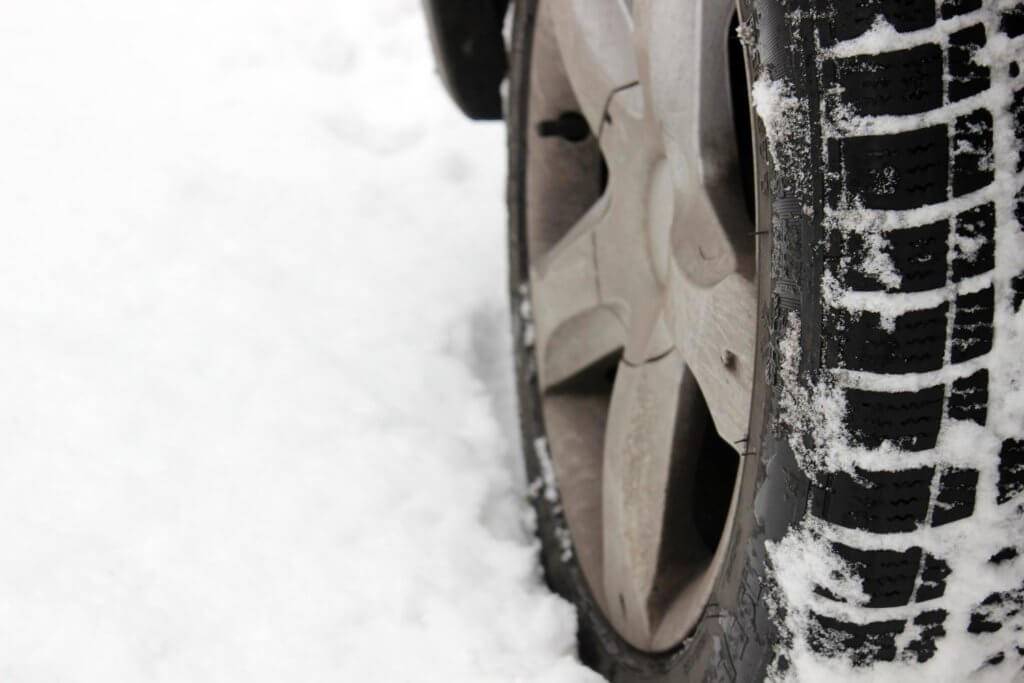
Now that you understand the importance of winter tires for your camper van, let’s move on to the factors you should consider when making your decision.
When looking for winter tires for your camper van you will want to consider:
- Size
- Tread pattern
- Load Capacity
- Speed Rating
- Affordability
- Type of Rubber
Size
One important factor to consider when choosing winter tires for your camper van is the size. It’s crucial to ensure that the tires you select are the right size for your vehicle. Using tires that are too small or too large can affect the overall performance and safety of your van.
Be sure to consult your vehicle’s manual or check with a tire professional to determine the appropriate tire size for your camper van.
Tread Pattern

Different tread patterns offer varying levels of traction and handling on roads that are
- wet
- snowy
- icy
Deep grooves and sipes are commonly found on winter tires as they help to channel water and slush away from the tire’s surface, providing better grip. Consider the typical road conditions you’ll be driving in and choose a tread pattern that suits those conditions.
Here is a chart to help you decipher the different tread patterns and what they do.
Directional Patterns
Good for snow and mud conditions

V-shaped Tread Patterns
Best Used for Icy conditions

Asymmetric Patterns
Best for wet road conditions
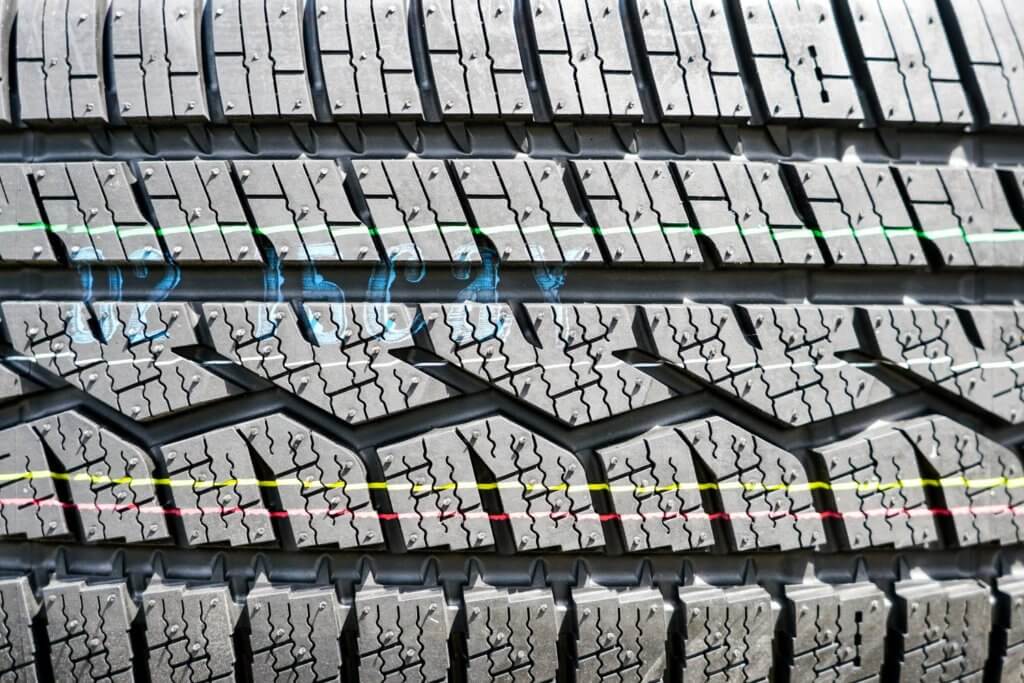
Load Capacity
Load capacity is also an important consideration, especially if you plan on carrying heavy loads in your camper van during the winter months.
Winter tires have specific load ratings that indicate their capacity to carry weight safely. Make sure to choose tires with a load rating that matches or goes over the weight you will be carrying to ensure optimal performance.
Speed rating
The speed rating indicates the maximum safe speed at which the tires can be driven. It’s essential to select tires with a speed rating that matches or exceeds the maximum speed at which you will be driving your camper van.
This ensures that the tires can handle the demands of your driving style and maintain stability on the road. Most camper vans will require the speed rating T (118 MPH).
Check out the chart made by Tirebuyer.com for a speed rating chart to find your speed rate.
Affordability
Affordability is one of the most important aspects to consider, and you surely want the biggest bang for your buck. You don’t need extremely expensive tires on your camper van that will break the bank.
In fact, all of the cheapo tires we have bought from Walmart have held up just fine.
Type of rubber used
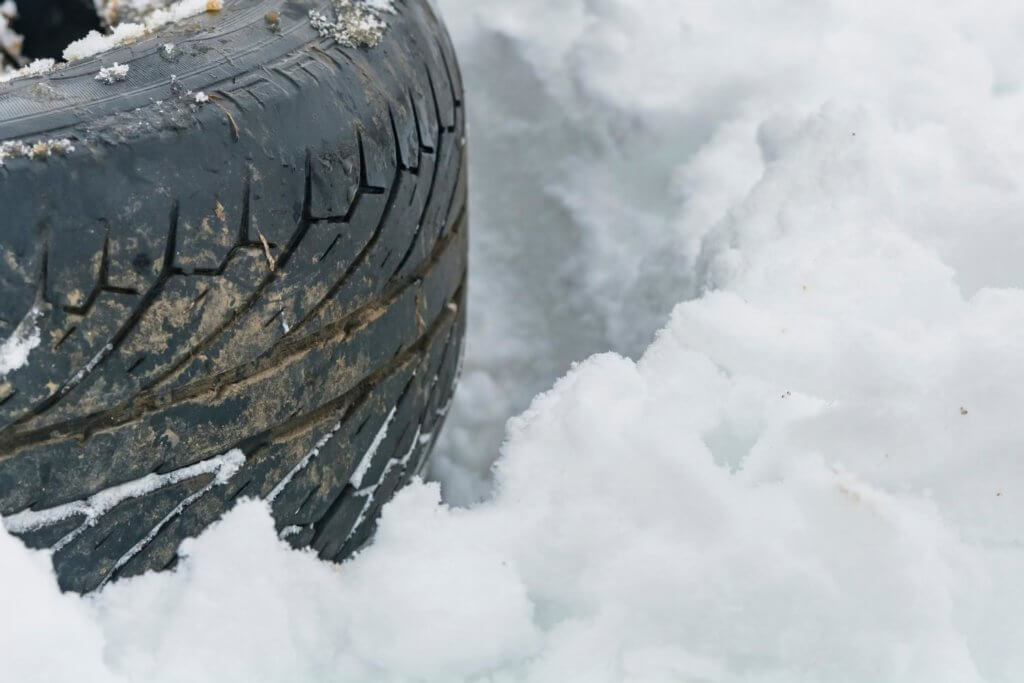
The rubber compound used in the tire plays a significant role in its performance and grip on icy and snowy surfaces.
The type of rubber used in winter tires is different from that of all-season or summer tires. Winter tires are typically made from a softer rubber compound that remains flexible even in freezing temperatures.
This flexibility allows the tire to:
- Conform to the road surface and maintain optimal contact
- Improve grip and traction
- Disperse water and slush
- Enhance performance on wet and snowy roads
The deep tread patterns found on winter tires work with the softer rubber to channel water away from the tire.
Studded or non-studded
For those seeking even more traction in extreme winter conditions, there are also specialized tread patterns available- studded tires, but do you really need them?
What are studded tires?
Some winter tires feature a stud-compatible design, allowing the addition of metal studs for enhanced grip on ice and hard-packed snow.
These studs dig into the icy surface, providing the most traction and braking power. However, it’s important to note that studded tires may not be legal or practical in all areas, so be sure to check local regulations before opting for this type of tread pattern.
Pros
- Provide the most grip out of all the tires
- Improve braking
- Improve traction
- Perfect for treacherous roads
Cons
- May be illegal in some areas
- Loud
- Cause a bumpy ride
- Can cause damage to roads
When to use Studded Tires vs. Non-studded Tires
You don’t necessarily NEED studded tires, however, if you think you will come across treacherous roads then you might want to pack them, check out these Nokian Nordman studded tires. If you need to save space in your van, you could go with tire chains instead.
If you insist on using studded tires, make sure to use them on icy or hard-packed snow-covered roads.
Non-studded winter tires, such as the Blizzaks, should be used on well-maintained winter highways or face a mix of road conditions.
If you are unsure of what conditions you may encounter, I recommend using winter tires and packing the snow chains just in case.
Top Winter Tire Brands for Camper Vans:
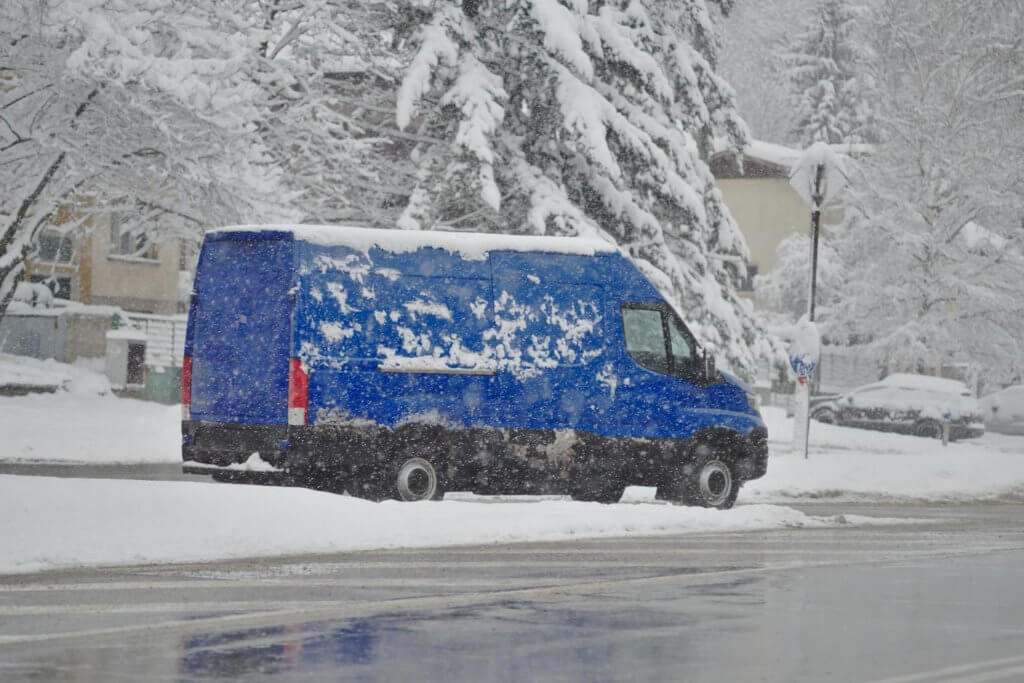
When it comes to selecting the right winter tires for your camper van, making an informed decision is crucial. With a wide range of options available, it can be overwhelming to choose the best winter tire brand for your camper van.
To help you navigate through the choices, let’s explore some of the top winter tire brands that are highly recommended for camper vans.
Blizzak
Manufactured by Bridgestone, Blizzak tires have gained a reputation amongst van lifers for their exceptional performance in icy and snowy conditions.
When it comes to tread design, Blizzak tires feature a unique Multicell compound that incorporates microscopic bite particles to enhance grip on icy surfaces. This innovative technology allows the tire to bite into the ice, creating thousands of tiny gripping edges. The result is improved traction and confidence on treacherous winter roads.
Blizzak tires also boast an impressive tread depth. With their deep and aggressive tread patterns, Blizzak tires are designed to tackle even the harshest winter conditions.
In terms of tire size, Blizzak offers a wide range of options to accommodate different camper van models. Whether you have a compact camper or a larger RV, you can find Blizzak tires specifically engineered to fit your vehicle.
Speed Rating: T (118 mph max speed)
Load Capacity: 2833 Pounds
Price: $232.99
Pros
- Best winter tires on the market
- No complaints
- Offer extreme traction for snow
- Utilizes new technology
Cons
- Pavement may cause sped-up wear and tear on the tires
- Winter use only may make it inconvenient because you have to switch tires out during the summer
- Not as fuel efficient as other brands
Michelin Defender LTX M/S
When it comes to winter tires for your camper van, another top option to consider is the Michelin Defender LTX M/S. This renowned tire brand has garnered a strong reputation for its exceptional performance in various weather conditions, including winter.
In terms of winter performance, the Michelin Defender LTX M/S delivers solid results.
The tire’s deep tread depth and specially formulated rubber compound provide excellent grip on snow-covered roads, giving you the confidence to navigate winter terrains. You can also use these tires in warmer months because they are all season.
One consideration when selecting the Michelin Defender LTX M/S is its slightly less aggressive tread pattern compared to dedicated winter tires like the Blizzak. These tires may not perform the best when it comes to extremely icy or slippery conditions.
Speed Rating: T (118 mph max speed)
Load Capacity: 2535 Pounds
Price: $262.99
Miles: 70,000
Pros
- Great for all-season use
- Best for gas mileage
- Great traction for an all-season tire
Cons
- Won’t provide the best traction for extreme ice
General Grabber Arctic LT Winter
General Grabber Arctic LT Winter tires are known for their exceptional grip and handling on all types of winter surfaces. With their aggressive tread pattern and unique biting edges, these tires provide excellent traction and stability.
Unlike some dedicated winter tires that sacrifice handling and comfort in favor of enhanced winter performance, these tires strike a great balance between winter capabilities and year-round usability. This means that you can enjoy a smooth and comfortable ride during other seasons.
Speed Rating: R
Price: $353.99
Pros
- Offer a balanced tire that isn’t loud
- Grips snow and ice well
- You can use these during other seasons
Cons
- May not have good traction compared to other brands
Tips for Proper Maintenance and Storage of Winter Tires
Let’s delve into some valuable tips for proper maintenance and storage of winter tires. By taking care of your tires during the off-season, you can ensure their optimal performance and longevity.
Clean Tires Before Storing
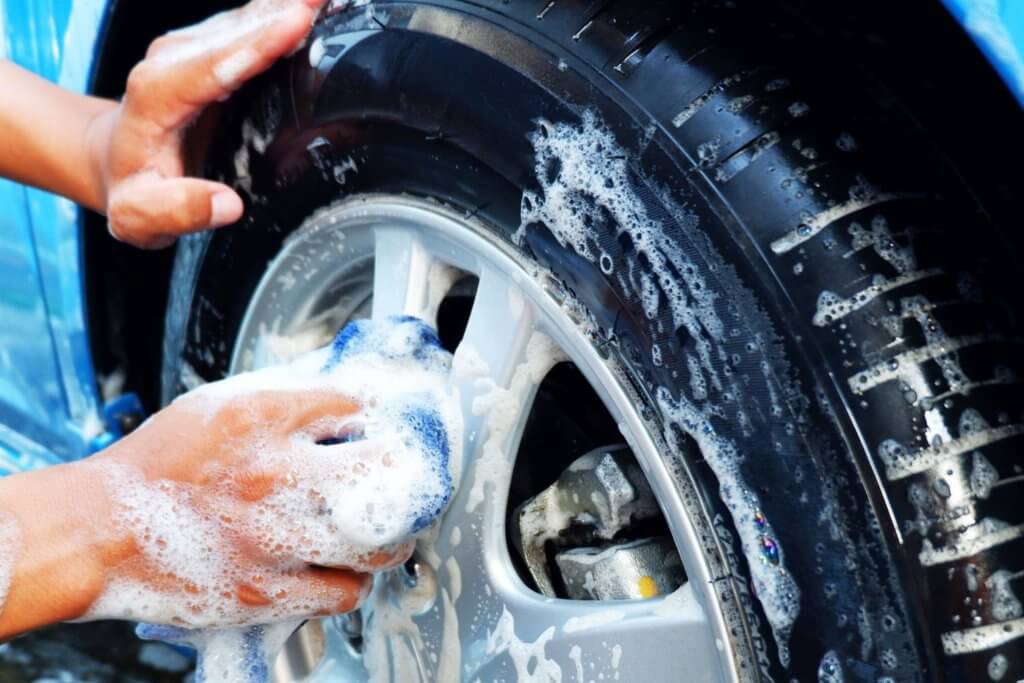
First and foremost, it’s essential to thoroughly clean your winter tires before storing them. Salt from the roads could cause damage if it sits on your tires for long periods of time.
Use a gentle tire cleaner and a soft brush to remove any dirt, salt, or grime that may have accumulated during winter use. Pay special attention to the tread and sidewalls, as these areas are most susceptible to damage.
Once your tires are clean and dry, it’s recommended to store them in a cool, dry, and dark location. Exposure to direct sunlight and extreme temperatures can degrade the rubber compounds and weaken the tire structure over time.
Consider investing in tire storage bags or covers to provide an extra layer of protection against dust and UV rays.
Tire Pressure in Storage
To prevent flat spots and maintain tire shape, it’s advisable to slightly overinflate the tires before storage.
Check the manufacturer’s guidelines for the recommended pressure, but typically adding a few extra pounds per square inch should suffice.
Remember to lower the tire pressure to the recommended level before reinstalling them on your camper van.
Regularly Inspect
Regularly inspect your winter tires for signs of damage or wear throughout the year. Look for any cuts, bulges, or punctures that may compromise the tire’s structural integrity.
If you notice any issues, have them professionally inspected or replaced. Addressing any damage will help prevent further problems and ensure your safety on the road.
Check Tread Depth
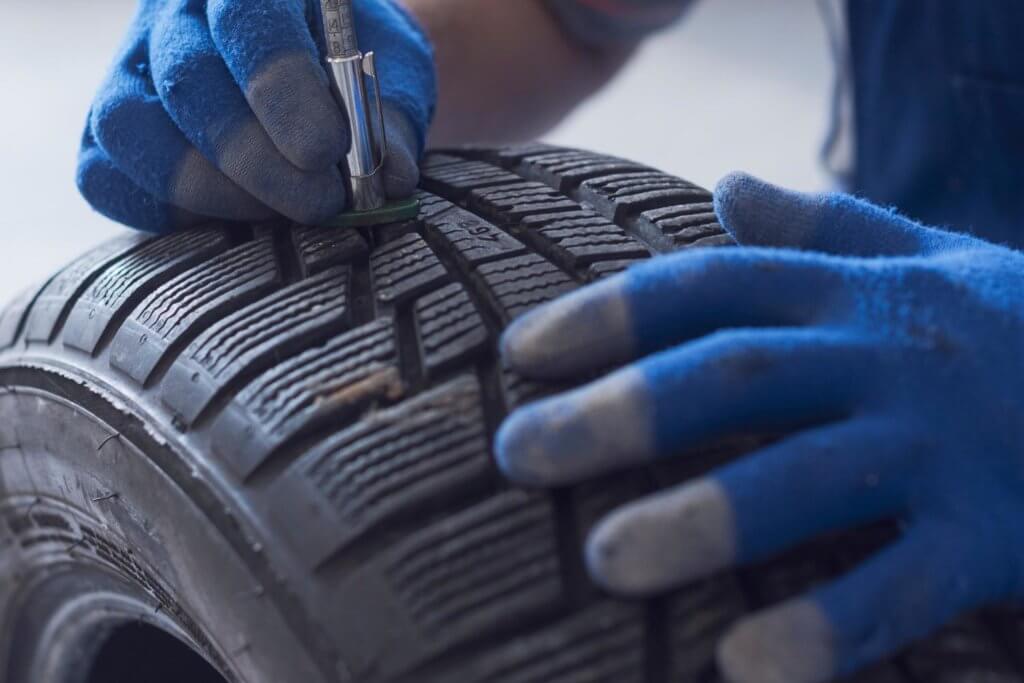
Lastly, when it’s time to reinstall your winter tires, check the tread depth. Winter tires lose their effectiveness as the tread wears down, so it’s vital to ensure they still have sufficient tread depth to provide the necessary traction.
Consider using a tread depth gauge or the “penny test” to determine if it’s time to replace your winter tires.
In Conclusion
In conclusion, selecting the right winter tires for your camper van is a crucial step in ensuring your safety and enjoyment during the winter months.
We believe the Michelin Defender LTX M/S is the best camper van winter tire because you can use them year-round and even though the tires aren’t studded they provide some fierce traction for icy roads.

